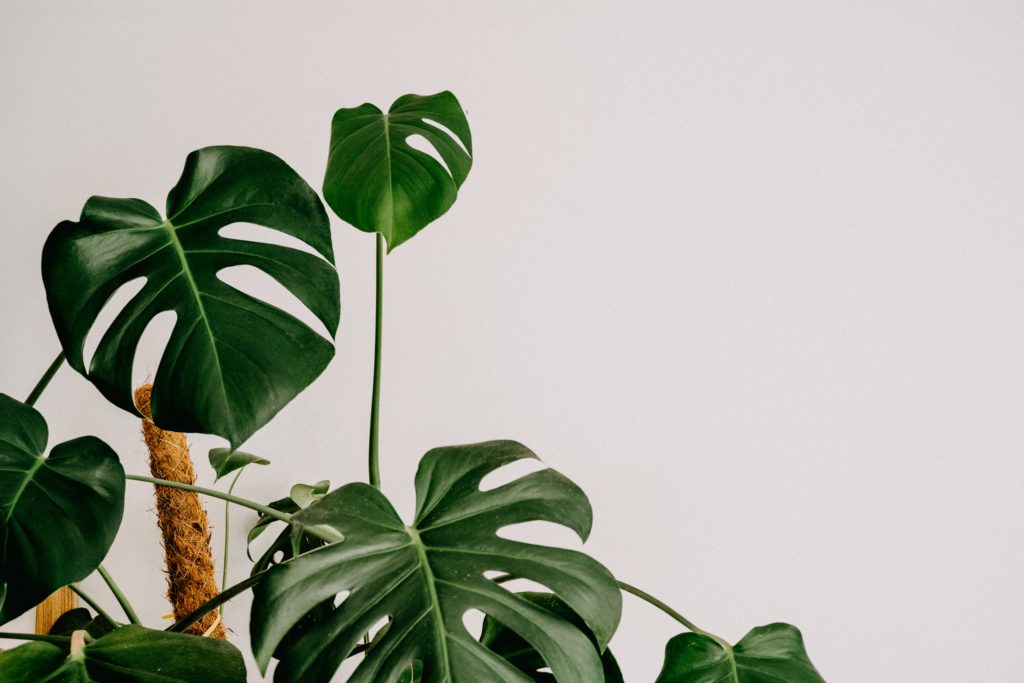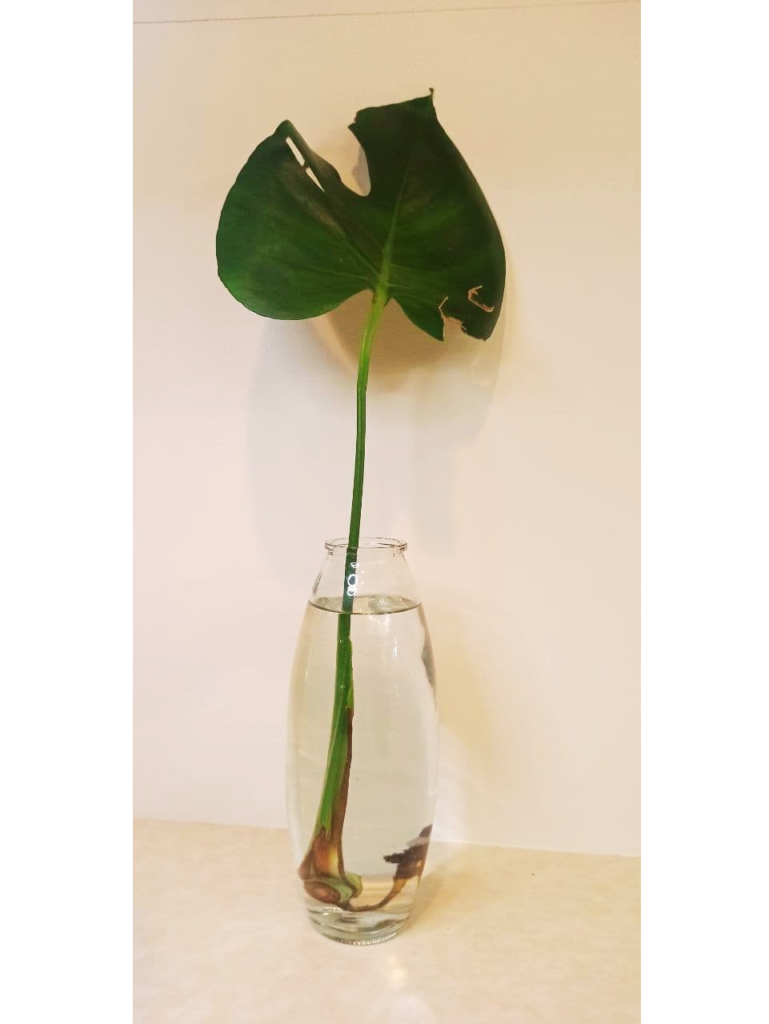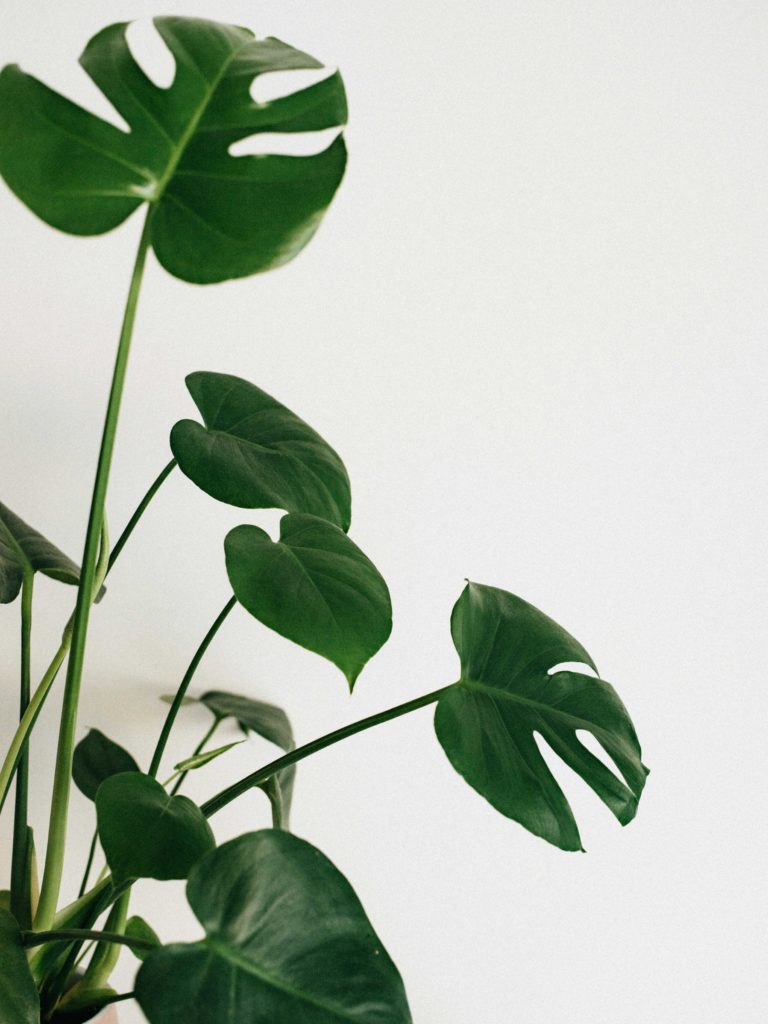Monstera plants are a popular choice for indoor gardening, as they are relatively easy to care for and can thrive in a variety of conditions. If you’re thinking about growing a Monstera plant at home, this blog post will give you all the information you need to get started.
We’ll cover the basics of Monstera plant care, including what they need to thrive and how to water them properly. We’ll also discuss the different stages of growth for Monstera plants, from seedlings to adults. Finally, we’ll touch on some common problems that can occur when growing Monsteras, and how to avoid them.

The basics of growing a Monstera plant.
To grow a healthy Monstera plant, you will need to provide it with bright indirect light, well-draining soil, and moderate humidity.
How to care for a Monstera plant.
watering your Monstera once the top inch of soil has dried out. Allow the water to drain completely before placing the pot back in its saucer. During the growing season (spring and summer), you may need to water your plant weekly. Reduce watering to every other week during fall and winter months.
The different stages of growth for a Monstera plant.
This is the stage where the plant is just starting to grow from a seed. The seedling stage lasts for about 2-3 weeks. During this time, it is important to keep the soil moist but not wet, and to provide plenty of indirect light.
The juvenile stage.
The juvenile stage lasts for about 6-8 weeks. During this time, the plant will start to produce its first leaves and will begin to grow more rapidly. It is important to continue to provide indirect light and to keep the soil moist during this stage.
The adult stage.
The adult stage begins when the plant starts to produce its iconic split leaves. This usually happens when the plant is around 8-10 weeks old. At this point, you can start to move the plant into direct sunlight if you wish, although it is still important to keep an eye on watering as overwatering can cause problems at this stage (see
Some common problems when growing a Monstera plant.
One of the most common problems when growing a Monstera plant is overwatering. This can lead to root rot, which can kill the plant. When watering your Monstera, make sure that the soil is dry before watering again. If the soil is constantly wet, the roots will start to rot and the plant will die.
Underwatering.
Another common problem when growing a Monstera plant is underwatering. This can cause the leaves to turn yellow and drop off. Make sure that you are watering your plant regularly and not letting the soil dry out completely.
Poor drainage.
Poor drainage can also be a problem when growing a Monstera plant. If the water cannot drain properly, it will sit in the pot and start to rot the roots. Make sure that there is good drainage by using a pot with holes in the bottom and adding some gravel or rocks to help with drainage.
Pest infestations.
Pests can also be a problem when growing a Monstera plant. Common pests include mealybugs, aphids, and spider mites. These pests can suck the sap out of the leaves and cause them to turn yellow and drop off. If you see any pests on your plant, you can try spraying them off with water or using an insecticidal soap.
How to grow Monstera cuttings
Monstera cuttings are easy to grow because they do not require any special care or attention. All you need to do is provide them with a little water and some indirect sunlight, and they will quickly start to grow.

How to grow Monstera cuttings.
When choosing a cutting, it is important to select one that is healthy and has at least 2-3 leaves. The stem should be firm and green, without any brown or yellow spots. It is also important to choose a cutting that is of a good size – not too big or too small.
Step 2: Prepare the cutting.
Once you have selected a healthy cutting, it’s time to prepare it for planting. First, use a sharp knife or shears to Cut the stem at an angle just below a leaf node (the point where the leaves attach to the stem). Next, remove the bottom leaves of the cutting so that only 2-3 leaves remain at the top. Finally, dip the cut end of the stem in rooting hormone powder or gel (this helps encourage root growth).
Step 3: Plant the cutting.
Now it’s time to plant your cutting! Fill a pot with well-draining potting mix and make a hole in the center large enough to accommodate your Cutting. Gently insert the cut end of the stem into the hole and lightly press around the base of the plant to secure it in place. Water your plant well, making sure not to overwater (too much water can cause root rot).
Step 4: care for your plant.
Once your plant is planted, it’s important to give it the proper care to ensure that it thrives. Place your pot in an area that receives indirect sunlight and water when the top inch of soil feels dry to the touch. fertilize your plant monthly with a balanced fertilizer. Finally, be sure to monitor your plant for pests and diseases and take action accordingly.
With proper care, your Monstera cutting will soon take root and grow into a healthy plant!
Troubleshooting.
If your cutting isn’t growing, there are a few things you can do to troubleshoot the issue. First, make sure that you’re using a healthy cutting. If the cutting is sick or has been damaged, it may not be able to grow. Second, check that you’ve prepared the cutting properly. The cut should be clean and sharp, and the stem should be free of any leaves or flowers. Finally, make sure that you’re planting the cutting in a well-draining pot with moist soil. If all of these conditions are met and your cutting still isn’t growing, it’s possible that the plant is simply taking its time. Be patient and give it a few more weeks to see if it starts to grow.
My plant is wilting.
If your plant is wilting, it could be due to a lack of water or too much sunlight. Make sure that you’re watering your plant regularly and giving it enough light but not too much sun. If you think your plant is getting too much or too little water, try adjusting your watering schedule accordingly. You can also try misting your plant with water to help it stay hydrated. If your plant is still wilting, it’s possible that it’s not getting enough nutrients. Try fertilizing your plant with a balanced fertilizer and see if that helps.
Personal story
I got from my neighbor a Monstera plant that she had for a year and didn’t grow and didn’t develop and she didn’t know what to do with it to make it grow.
I put the plant near the window that will receive sun but not directly.
I checked the soil and it was very wet.
I left it without watering for a month and a half!
During this period it started to recover and put out new leaves.
After a month and a half I watered it and fertilized it and cut off some leaves that looked sick.
Since then it has grown and prospered and has already grown many new leaves and it looks happy and healthy

How to grow the monstera outdoors
If you want to add a touch of tropical flair to your garden, then planting a monstera outside is a great option. These beautiful plants are native to Central and South America, and can thrive in many different climates. However, it is important to choose the right location for your monstera and take care of it properly. With a little effort, you can enjoy healthy growth and vibrant leaves on your monster outdoor plant.
Planting Monstera outdoors.
When it comes to planting a monster outside, location is key. The plant prefers part sun to part shade, so find a spot in your garden that gets some bright light but isn’t in direct sunlight all day. Monstera also likes moist conditions, so if you live in a dry climate, consider planting it near a water feature or misting it regularly.
the right soil
Monstera does best in rich, well-drained soil, rich in organic matter. If your soil is heavy or clay-like, mix in some sand or perlite to help improve drainage. You can also grow a monster in a pot filled with commercial potting mix designed for tropical plants.
The right planting time.
The best time to plant a monster outside is during the spring or summer months when the weather is warm and there is no fear of frost. Monstera can be sensitive to cold temperatures, so it is important to wait until the danger of frost has passed before planting it outside.
Treatment at Monstera Outdoors.
Monsters should be watered regularly, especially when they are young. Water them when the top inch of soil is dry. Be careful not to overwater, as this can lead to root rot.
fertilizing.
Fertilize your Monster every two weeks during the growing season with a balanced fertilizer. You can reduce it to once a month in winter.
chopped.
Pruning is important for maintaining the shape of your plant and encouraging new growth. Cut off any dead or dying leaves, and trim any long vines that have gotten out of control.
Signs of a healthy Monstera outdoor plant.
One of the clearest signs that your monstera is healthy and doing well is if it has vibrant green leaves. If the leaves start to turn yellow or brown, it could be a sign that the plant is not getting enough water or nutrients.
strong roots.
Another sign of a healthy Monstera plant is strong roots. You can check the roots by gently pulling on the plant to see if it is firmly planted in the soil. If the roots are weak, the plant will likely fall over.
new growth.
Finally, new growth is another sign that your monster plant is healthy and thriving. If you see new leaves or stems growing, it means the plant is getting the nutrients it needs and is able to continue growing.
Summary
If you’re looking for a statement piece for your garden or patio, look no further than the Monstera plant. Also known as the Swiss cheese plant, this tropical beauty is easy to care for and can thrive in both sun and shade. With its large, glossy leaves and prominent aerial roots, Monstera is sure to add some wow factor to your outdoor space.
Conclusion
If you’re looking for a plant that is sure to make a statement, the Monstera is a great choice. With its large, glossy leaves, it’s sure to add some life to any room. But before you run out and buy one, there are a few things you need to know about how to grow a Monstera plant at home.

